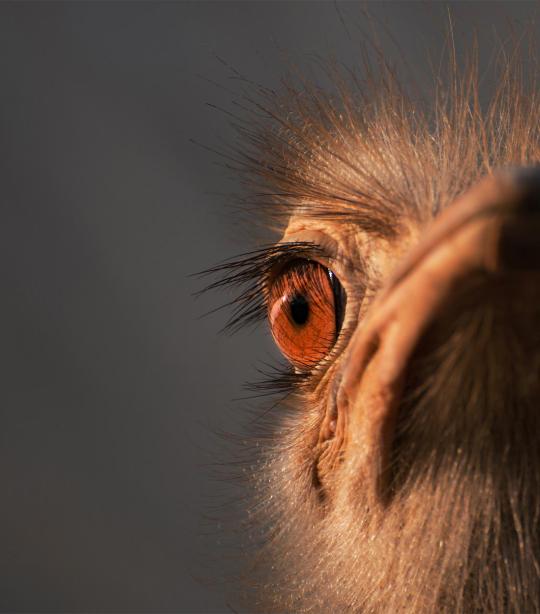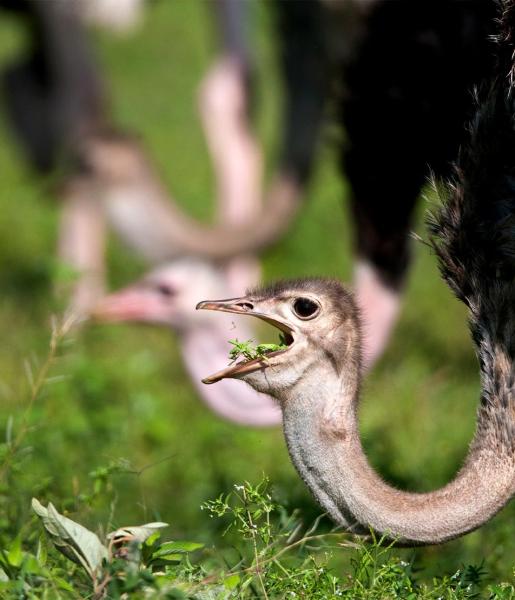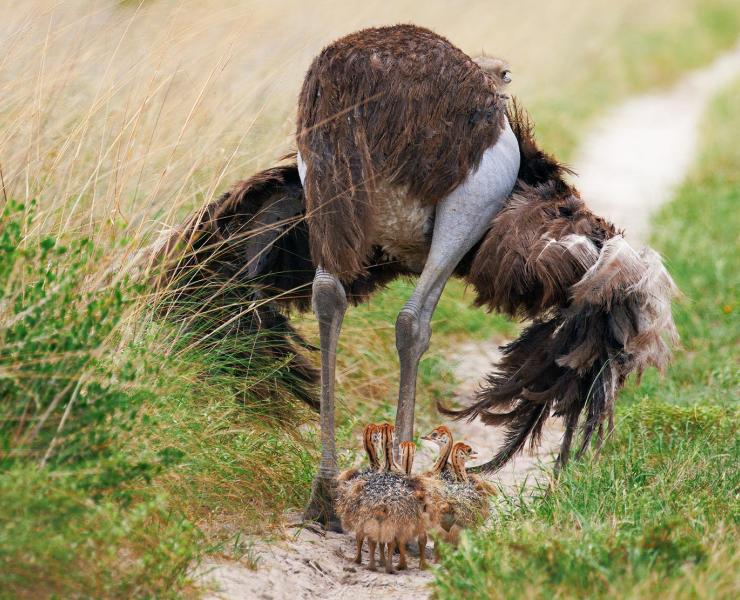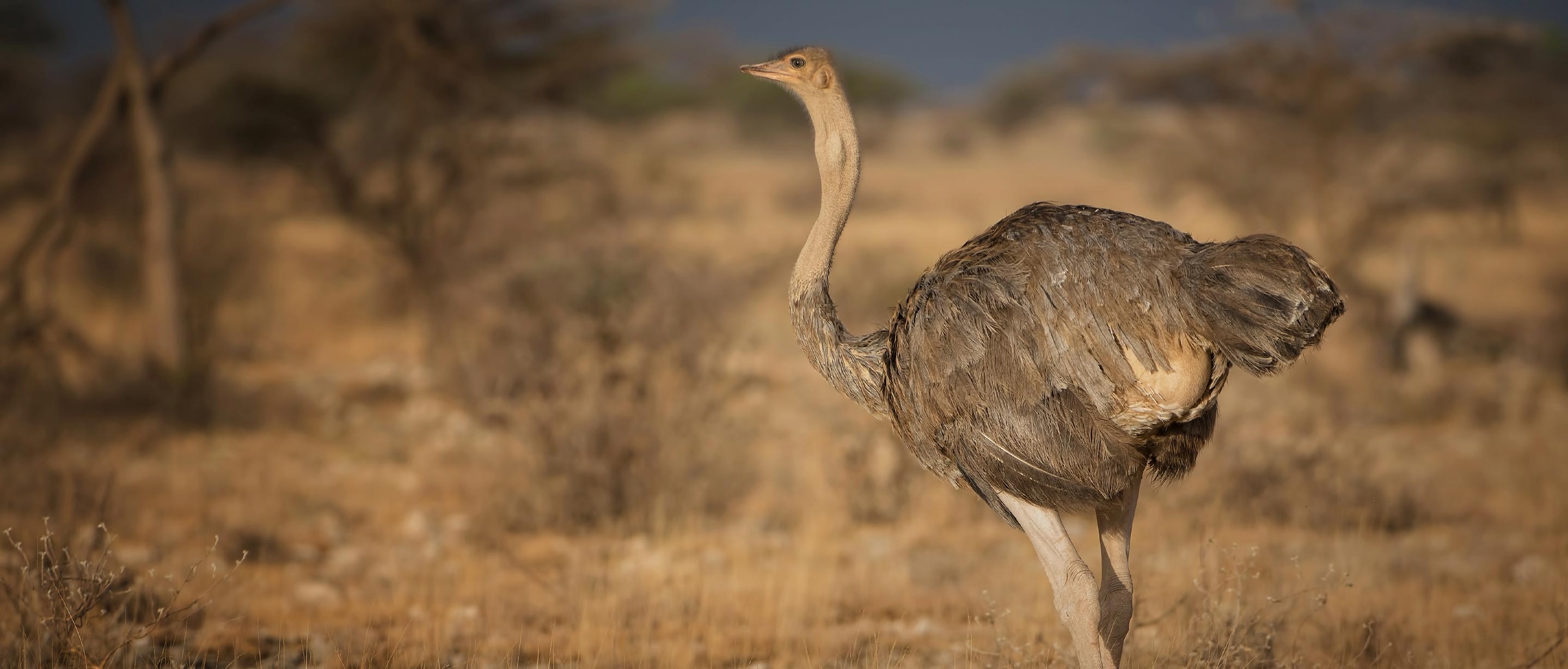What is an ostrich?
In 2016, the Somali ostrich was named a separate species from the common ostrich. They were previously a subspecies. Both ostrich species are the largest birds in the world. They are flightless and rely on strong legs with two clawed toes used for running and kicking. Males are black with white wings and tail feathers, while females are brownish-gray.
Struthio camelus (Common ostrich); Struthio molybdophanes (Somali ostrich)
90 to 130 kilograms (200 to 290 pounds)
Stands 2 to 3 meters tall (6 to 9 feet)
40 years in the wild; up to 50 years in captivity
Semiarid plains and woodlands
Omnivorous
Approximately 40 days to hatch
Humans, cheetahs, lions, leopards, hunting dogs, spotted hyena

Challenges
Ostriches are popular in the fashion world.
In the 18th century, ostrich feathers were so popular in ladies’ fashion that they disappeared from all of North Africa. If not for ostrich farming, which began in 1838, then the world’s largest bird would probably be extinct. Today, ostriches are farmed and hunted for feathers, skin, meat, eggs, and fat — which, in Somalia, is believed to cure AIDS and diabetes.
Humans are encroaching on ostrich habitats.
As human populations grow, they expand into areas where wildlife once roamed freely. The construction of settlements and roads and agricultural cultivation all contribute to habitat loss.
Solutions
Our solution to protecting the ostrich:
African Wildlife Foundation works with local communities to decide on an appropriate plan to bring tourism to the area. In Kenya’s Laikipia region, the Koija Starbeds Lodge was constructed to provide an unparalleled experience to tourists, while at the same time, setting aside land for wildlife, and creating jobs and incomes for the local community. The land at Koija Starbeds has recovered remarkably well from past overgrazing and now supports higher numbers of wildlife.


Behaviors
They are polygamous.
Males will escort a flock made up of one head female and a couple of subordinate females. Courtship is very ritualized and synchronized. All females lay their eggs in the same nest, though the head female usually drives the others away after laying. The male plays a large part in raising the young, from helping to construct the nest to guarding the eggs and chasing off predators.
Sometimes, flocks mingle together.
During the dry season, large groups (up to 700 birds) will congregate peacefully at a water source, though flock identity remains intact. Sometimes, one flock will adopt the young of another, and sometimes, groups of subadults will form.
The ostrich can roar like a lion.
While not exactly a roar, males have a booming warning call that can sound like a lion.
Diet
Ostriches are resourceful and adaptable grazers.
They feed on grasses, shrubbery, berries, seeds, and succulents. They also eat insects and small reptiles — which they chase in an awkward zigzag pattern. These large, flightless birds can rely on the vegetation as a water source for a short time; however, for long-term survival, they need open-water sources.
Habitats
Where do ostriches live?
Ostriches live throughout Africa’s semiarid plains and woodlands.



